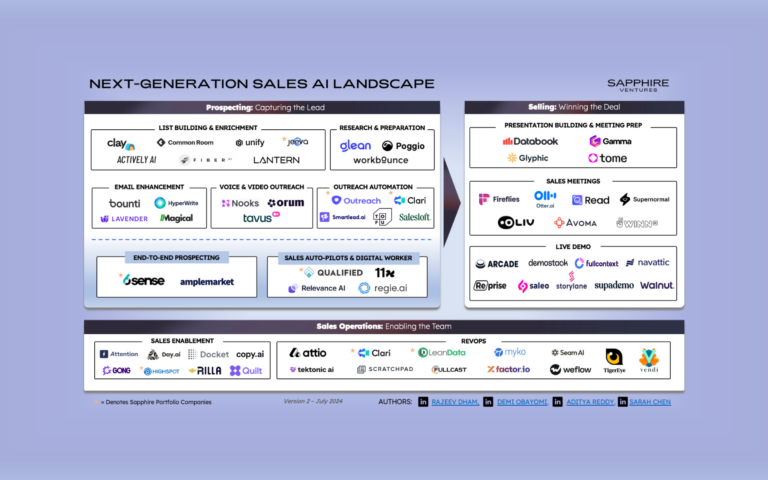In the early 2000s, Brian Halligan and Dharmesh Shah created a suite of software tools for marketing and sales. By 2012, their team had grown to over 300 employees, their product suite expanded to include social media, content management, web analytics and search engine optimization.
By 2014, they hit $100M+ in annual revenue, and their company — HubSpot — went public despite a turbulent market.
How did they do it?
Yes, they built a good product. Yes, they developed close relationships with customers, hired the right team, and prioritized organic search to reduce cost of sales — yet Hubspot did something different that fueled their long-term growth: They created a new product category — “ inbound marketing” — that identified a new market trend that became synonymous with Hubspot in the minds of their prospects and investors.
Today, category creation, and the example of Hubspot, is the gold standard for what CMOs dream of achieving since defining and owning a new category can be directly measured in terms of its impact on a company and the broader industry.
Like other Silicon Valley marketers, I’ve been tasked in my career with replicating the lightening in a bottle that Hubspot achieved, and I wanted to share the best practices I’ve learned from multiple efforts — with many failures — to create a new category.
Before I give my advice to marketers, I want to provide a word of caution to all of the start-up executive teams who are asking your CMOs to go do this: Category creation requires more than a game-changing product or an interesting tagline. It takes a powerful, consistent vision that you drive throughout all aspects of your business — from product development, to sales strategy, executive content, and yes, marketing. This isn’t something you can just outsource to marketing and expect it to be successful.
Why would you want to go to this level of effort? Because when it works, category creation:
- Sharpens internal focus; helps you prioritize, allocate resources and be ruthlessly efficient with your go-to-market activities.
- Builds awareness; by defining the trend, category creation creates the perception that you’re the expert in this new movement and can start a new market conversation associated with your brand.
- Fuels the sales conversation; this new market conversation can help qualify leads and accelerate sales by providing a framework for your customers to “think different” — and make your competitors respond to your POV.
If successful, category creation becomes a self-fulfilling prophecy. When you’re able to both identify the disease and deliver the cure — it creates a defensible moat around your business that will be increasingly difficult for the competition to breech.
Numerous industry leaders have written about category creation — yet there is no singular playbook for how to approach this effort. This often leads companies to diving headfirst into tactical executions without first understanding how category creation is different than a regular marketing campaign. Based on my efforts to build categories at Google, Facebook and Cisco, here are three often-overlooked but fundamental elements to building a new category.
1. Context matters
From the start, you must base your efforts on some broader market, consumer, or societal change that you believe will fundamentally change how we should look at the world. Providing that macro context elevates the conversation beyond a product pitch from your company, and helps create a sense of inevitability for your vision.
In my experience, you need quantifiable data to make the trend you’re betting on real. Without data, your good idea is just another unsubstantiated opinion.
When HubSpot rolled out inbound marketing, it led with a manifesto about the evolution of marketing to digital channels, and the business need to efficiently increase sales and marketing in a tight economic environment.
Against the backdrop of the 2008 financial crisis, HubSpot’s vision of efficient and effective inbound marketing and predictable revenue streams resonated with customers and prospects. The team fleshed out this macro trend with data about the specific impacts on SMBs and enterprises — and detailed tangible steps companies needed to take to remain relevant during this change (i.e., shifting from paid to organic ad channels). Clearly spelling out change, and what customers could do to address it, paved the way for prospective customers to buy into that same vision — more than 95,634 others to be exact.
Category creation requires an intellectual as well as a tangible foundation. You need both a clear problem and solution for the concept to take off. Remember that the intermediate goal for creating a new category is starting a conversation in the market that includes you. That mean the market context you set up needs to be…
2. Be self-serving, but never self-centered
Once you define the underlying problem you’re working to solve — you must become known as the one solving it. If your initial arguments / messaging / data are well crafted, they will do some of this heavy lifting for you, revealing how smart your organization is in recognizing this sea change. Yet to truly cement your position as an expert, you can’t go it alone. You need the market to weigh in and build on the conversation.
The Achilles’ heel of many category creation efforts is that a company positions itself as the sole solution for the world’s problem. This isn’t credible, particularly if you’ve identified a big enough issue to warrant a new category. There will likely be incumbents addressing parts of the problem and if the trend you identified is so economically interesting, you should expect to have a host of competitors soon.
The content around your new category will naturally be self-serving — after all, you identified the problem and built a solution to address it. If you’re legitimately the “only” solution possible, you’re either:
- Simply engaging in a tone-deaf sales pitch
- Haven’t identified a big enough trend to be interesting
- Some sort of monopoly
In your vision for the future, you need to carve out roles for your competitors and legacy solutions. Remember that by defining the market context, you’ve created a framework that should be able to identify what solutions are better positioned to address what aspects of the problem. That means that one intermediate measure of success for category creation is when your industry peers begin to respond and disagree with your arguments. Let them. To become truly valuable, category creation needs more voices in the market to legitimize the problem you identified.
At this point, the marketing challenge shifts from identifying the problem to making sure you out execute everyone else who just woke up to this good idea.
3. Think of category creation as a political campaign
Many startups have the best intentions to create and lead a new category — yet they forget that can take 12-18+ months of consistent execution against a singular idea before it takes hold in the market.
In 2008, Google acquired DoubleClick in an effort to develop a “unified adtech stack” across search, display, video, social formats. Even after officially announcing this vision of how a unified platform would benefit marketers, it took several years of developing the product and showing the value of a single platform for multi-channel marketing to take root — and peers like Adobe to follow suit.
One way to think of category creation is like a political stump speech. To have your idea “elected” in the market, you’re going to need to deliver the same core messages in different formats over a longer period. Of course, you can’t just copy and paste and beat people up with the identical message until they believe you. Just like politicians, you’ll need to vary your anecdotes, your proof points, your channels — even who is delivering your messages — all while staying consistent with your core.
Too frequently, companies and executives lose focus and want to talk about the “next new thing.” In my experience, just about the time when you’re sick and tired of repeating the rationale for your new category is about the time you’ll have a customer or industry pundit say: “that’s interesting, I’ve never heard that before.” That would be the wrong time to shift your focus to something new.
Set yourself up for success.
Everyone wants to create categories — and many fail. Adobe famously flopped when it tried to pitch “Network Publishing,” and I missed the mark at Cisco with “entertainment operating system” — our attempt to warn media publishers about the need to manage their branded content, audience data, and monetization (a vision that Facebook eventually paid off).
For all of the CMOs being asked to create categories, remember that:
- Category creation is not just a marketing activity. Given that this is a “moonshot” call-to-action for your company, customers and the industry, you must have top-down alignment from your leadership team.
- In addition to genuine insight and a crystal-clear articulation of your solution, category creation work requires long-term focus, and grit. Don’t expect short-term, immediate results. You’re playing the long-game.
- Despite all of your efforts, you’ll most likely fail. Category creation is difficult and there are a lot of smart people competing with you. Regardless, if executed with the above best practices in mind, even a failed category effort will still likely yield some high-quality marketing you can be proud of and will help advance your business.
Despite these challenges, trying to develop a new category isn’t something you should avoid. Just make sure you approach it the right way to set yourself up for possible success.

![[Image via HubSpot] Some of the original market data HubSpot used to validate the industry evolution to "inbound marketing".](https://sapphireventures.com/wp-content/uploads/2021/01/HubSpot.png)


